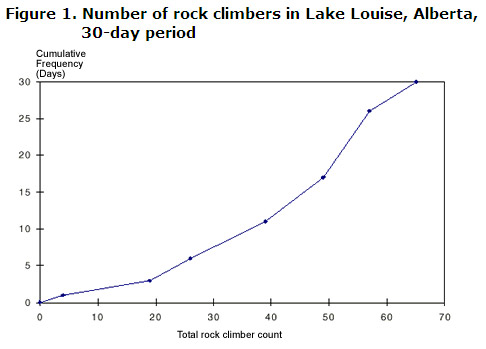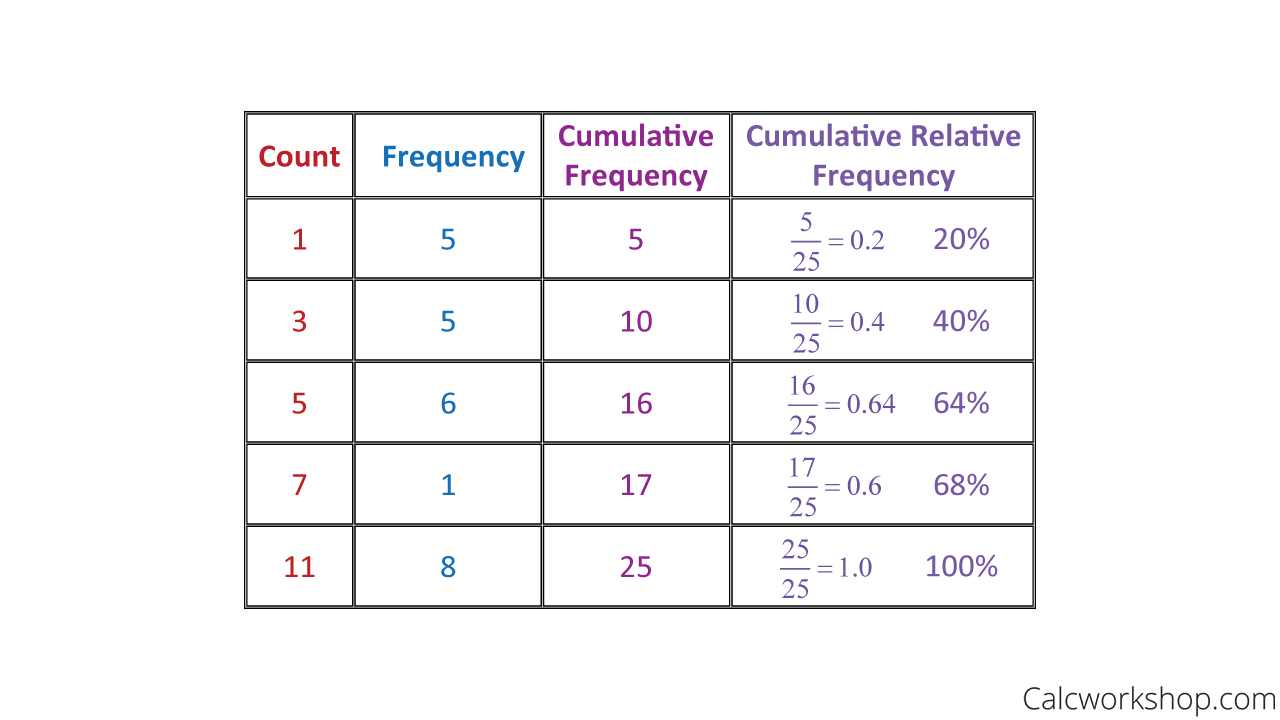A Cumulative Frequency Cf Indicates Which of the Following
All this means is that it represents the running-total of frequencies. Arrange the scores in an array that is 10 12 12 14 15 16 18 20 The median is 14152 145 Mode 12 MEDIAN FOR GROUPED DATA For grouped data we have the following formula in finding the median.

Cumulative Frequency Definition Types Constructing Cumulative Frequency Table Graph Examples
A cumulative frequency refers to the number of times an outcome occurs that is above or below a certain value.

. A second from top. The frequency of an element in a set refers to how many of that element there are in the set. Who are the experts.
As we know that the cumulative frequency curves are created using the cumulative frequencies so in more than cumulative frequency curve the frequencies of succeeding class or interval are added to the current class or interval frequency. A frequency distribution of a continuous variable has true limits. Draw a cumulative frequency table for the data.
A number of scores at any given value b number of scores below any given value c number of scores at or below any given score d number of scores at or above any given value. To calculate cumulative frequency we add the first frequency to the second frequency then add the third frequency to the result and the process continues. Find cumulative frequency for each class.
Calculating cumulative frequency gives you the sum or running total of all the frequencies up to a certain point in a data set. The total frequency of all classes less than the upper class boundary of a given class is called the cumulative frequency of that class. Frequency is nothing but the rate at which activity has occurred which is further denoted by F.
RequencyF ableT of Student Work Hours w Relative and Cumulative Relative requencyF ADTA ALUEV FREQUENCY RELATIVE FRE-QUENCY. There are two types of cumulative frequency distributions. The number of worker columns is the frequency column.
Which of the following could be a cumulative. 3 marks Level 6-7 GCSE. Cumulative frequency can also defined as the sum of all previous frequencies up to the current point.
Experts are tested by Chegg as specialists in their subject area. The cumulative frequency in the last row is the same as the total sum of frequencies. In a cumulative frequency polygon the bottom of the vertical axis cf should normally indicate a frequency of zero.
For the frequency distribution below what is the value of N. To find the cumulative frequency of an event find the sum of all the frequencies up. For which of the following situations would a two-sample dependent t.
We use class frequencies and the pattern we just discussed to complete this task. The sum of all the frequencies is 50. A Complete the cumulative frequency column in the table above.
Cumulative Frequency Cumulative Relative Frequency A cumulative frequency graph shows the total number of values that fall below the upper boundary of each variable. A continuous frequency distribution is constructed when the variable of interest is continuous in nature. The total frequency of all values less than the upper class boundary of a given class interval is called the cumulative frequency up to and including the class interval.
First Class Cumulative Frequency cf 1 14 Second Class Cumulative Frequency cf 2 14 12 26 Third Class Cumulative Frequency cf 3 25 7 33 Fourth Class Cumulative Frequency cf 4 33 3 36. The first cumulative frequency is the same as the first frequency as you just add a zero to the frequency. Less than cumulative frequency distribution.
OT nd the cumulative relative frequencies add all the previous relative frequencies to the relative frequency for the current row. 2 marks b Using the data from your table plot a cumulative frequency graph on the axes below. For example the cumulative frequency up to and including the class interval 834110862 in the previous example is 20 6 3 29 signifying that 29 cars have prices less than 10862 US dollars.
The cumulative frequency is denoted by CF and for a class interval it is obtained by adding the frequency of all the preceding classes including that class. Cumulative frequency is the running frequency of every group present in the table. Example Problem Statement The set of data below shows the ages of participants in a certain winter camp.
Cumulative relative frequency is the accumulation of the previous relative frequencies. This measure is different from absolute frequency which refers to the number of times a particular value appears in a data set. It indicates the total number of values less than or equal to the upper limit of that class.
Median lb i where lb lower class boundary of the median class n total frequency cumulative frequency before the median class i size of the class. A table showing the cumulative frequencies is called a cumulative frequency distribution. 100 2 ratings Answer.
View the full answer. Below is a frequency table of data showing the amount of time people spent on a particular website in one day. Show transcribed image text.
You can create more than cumulative frequency by subtracting the frequency of the second-class from the. We review their content and use your feedback to keep the quality high. The cumulative frequency is defined as the.
F frequency CF cumulative frequency RF relative frequency CRF cumulative relative frequency CRF cumulative relative frequency in percentage.

Cumulative Frequency An Overview Sciencedirect Topics

How To Find Cumulative Frequency W 11 Examples

Statistics Power From Data Analytical Graphing Cumulative Frequency
0 Response to "A Cumulative Frequency Cf Indicates Which of the Following"
Post a Comment